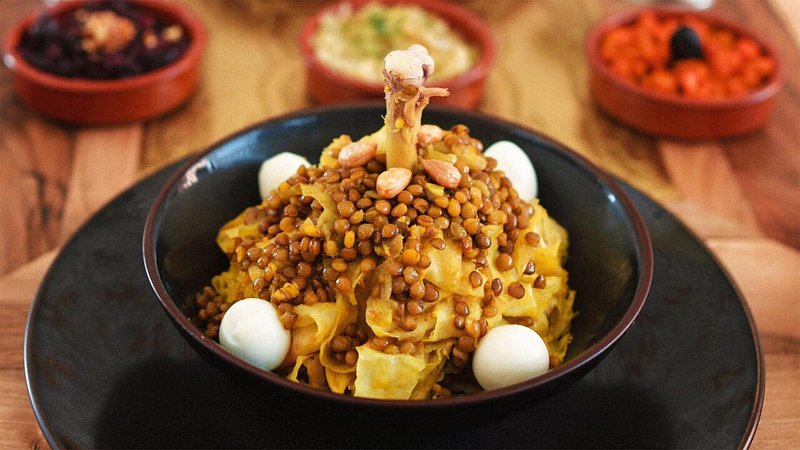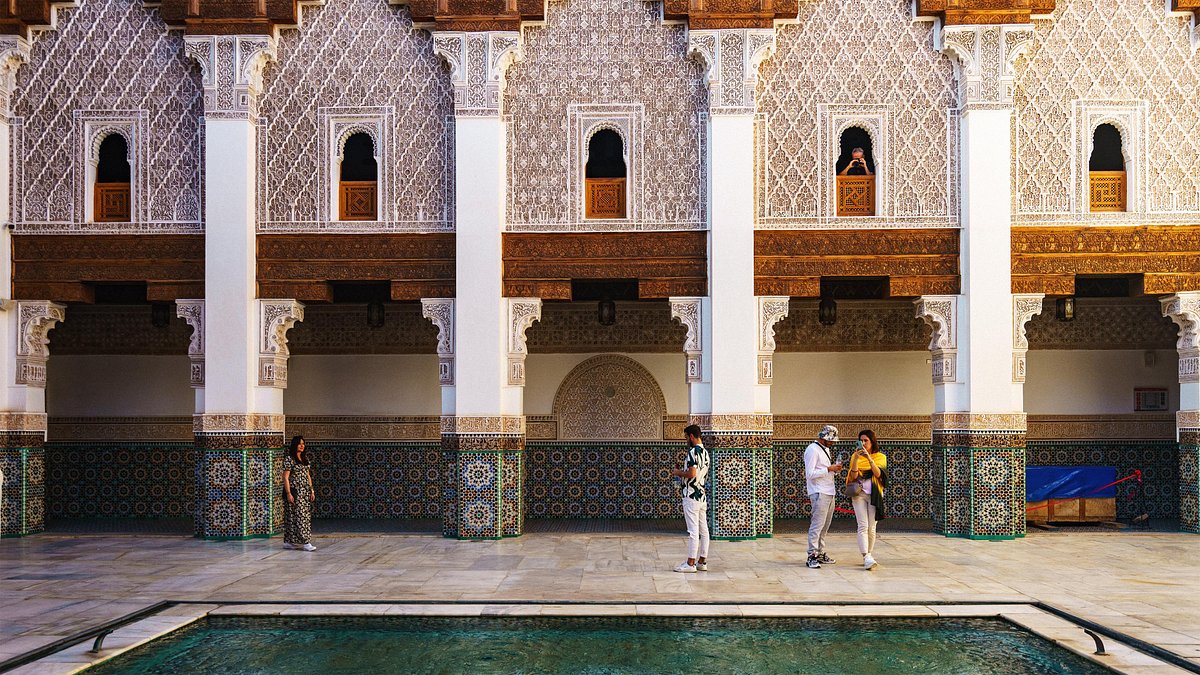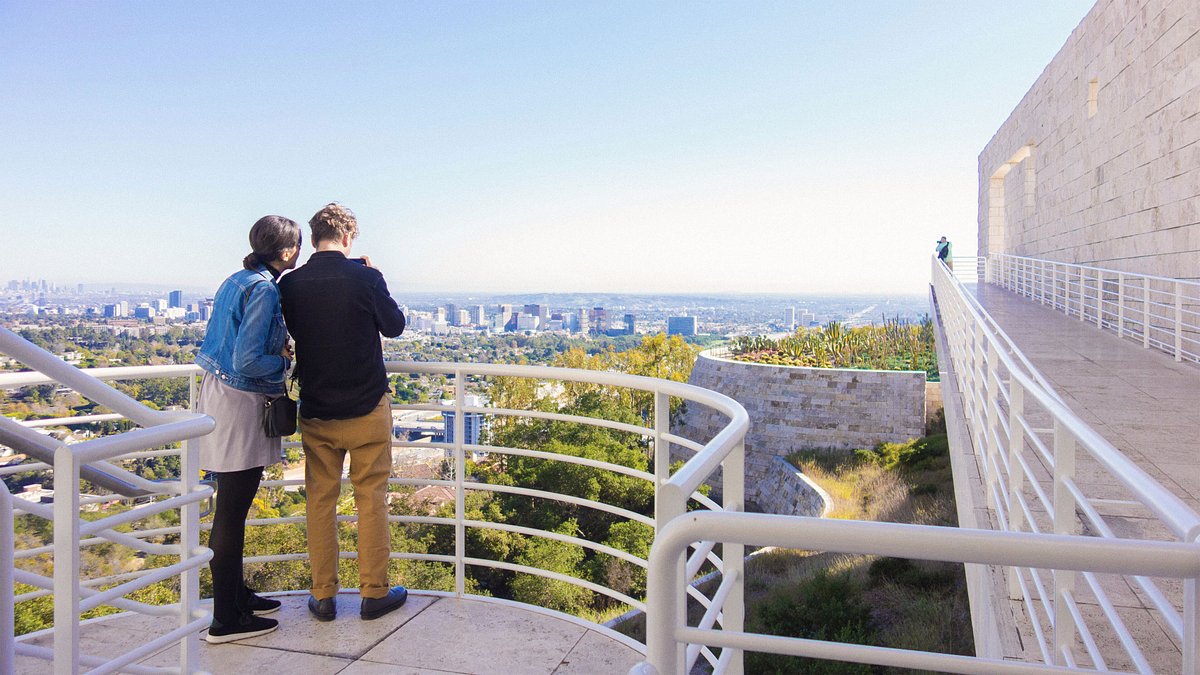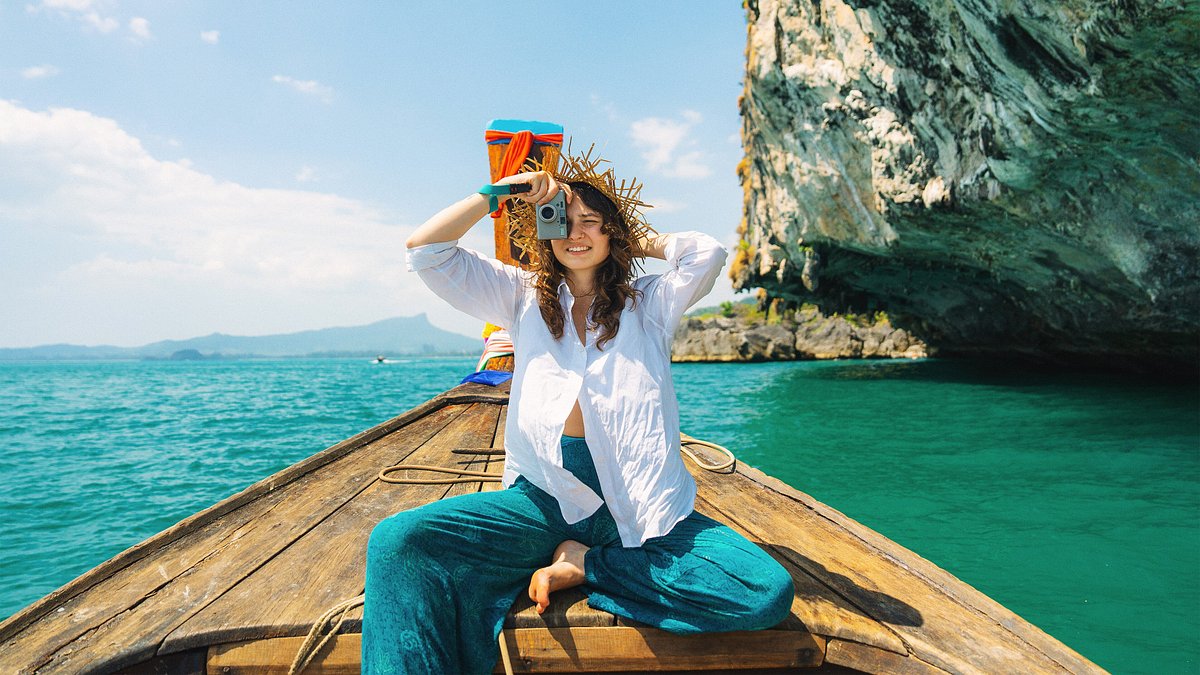Marrakech is a city that engages your mind and quickens your pulse. Stroll the colorful gardens, gaze up at the minarets crowning the mosques, and get lost in the narrow lanes and endless shops of the sprawling Souks. The city’s rich history spans centuries, and there are plenty of unique museums and gorgeous palaces to show for it.
Bring your most comfortable shoes to Marrakech. Just about everywhere you go inside the Medina—the old walled city where you’ll spend most of your time—is closed to traffic, so you’re definitely going to get your steps in. But with the sights, sounds, and smells you’ll encounter here, you wouldn’t want to rush by anyway. We’ve recommended our favorite spots, backed up by reviews from Tripadvisor’s top travelers.
DAY ONE
MORNING: Learn to bargain in the Souk
If you’re staying in the medina, you’ll probably get hand-written directions to Jemaa el-Fnaa that read something like this: walk toward the arched doorway, turn right when you see piles of bread, turn left at the olive stand, look for the place that sells silk. There are no street signs inside the medina, so you’ll appreciate the advice from your innkeeper. It’s better than any map.
Jemaa el-Fnaa is an enormous open square where you’ll find everything from fig sellers to snake charmers to baboon handlers who urge them to jump on your shoulder for a picture. It’s chaotic and confusing, with half a dozen different people shouting at you at the same time in multiple languages. To get away from the noise, look to the sky; there are many eateries with rooftop patios (like Atay Café) where you can watch everything in peace.
The Souk—the tangle of alleyways holding hundreds of vendors—fans out in every direction. There are clusters of leather tanners, carpet makers, and brightly colored spice sellers, but mostly everything is mixed together. Vendors lead donkeys pulling wagons filled with mountains of merchandise through the archways, and motorcycles zip around impossibly tight corners.
If your eye rests on any particular item for more than a second or two, the vendor will offer a price. It will be way more expensive than what the item is actually worth, so don’t be confused by the exchange rate. A good rule of thumb is to counter 10 percent of the original offer (despite their objections), then settle somewhere in the middle after more negotiation.
AFTERNOON: Travel through time in the Medina
In the middle of the Medina, the rooftop Terrasse des Epices is a relaxing retreat high above the crowded streets of Marrakech. The tagines—cooked and served in a cone-shaped clay pot—are the way to go. We enjoyed the chicken thighs simmered with olives and candied lemons, although all of the lunch plates we tried were excellent.
More than six centuries old, the Ben Youssef Madrasa once was home to up to 900 students at a time studying Muslim teachings. The main courtyard, spread around a placid reflecting pool, is one of the most beautiful sights in Marrakech. The students’ rooms, as spartan as monks’ cells, are arranged along the second floor. The carved cedar woodwork, the elaborate stucco decorations, and the colorful mosaics are stunning.
Not far from there, the Maison de la Photographie is set within a carefully restored home. The pictures on exhibit are a time capsule of daily life in Marrakech and the surrounding region in the 19th and 20th centuries. It’s hard to find, but it’s worth the effort if you’re a history buff.
EVENING: Taste the finest Moroccan cuisine
On the northern fringes of the Medina, Dar Yacout is one of the city’s best restaurants. Surrounding an impossibly blue pool and lighted by copper lanterns, the open-air dining room is jaw-droppingly beautiful. Lamb is prominent on the menu in dishes like roasted lamb shoulder with a saffron sauce, but there’s a wide range of options, including many without meat.
If you happen to go by Jemaa el-Fnaa on your way back to your riad (a Moroccan manor-turned-inn), you’ll notice it now has a completely different vibe. The snake charmers and baboon handlers are mostly gone, with the space given over to affordable street food stands. Sample traditional Moroccan fare, such as merguez sausages, maakouda potato patties, and harira soup, made with lentils, chickpeas, and tomatoes. Adventurous eaters might try méchoui, a spit-roasted lamb, or a whole sheep’s head (the brain is a Moroccan delicacy).
- We know this city can feel overwhelming, so a tour is a great way to get your bearings. Lasting half a day, the highly recommended Highlights of Marrakech tour passes by the most popular sights, winding up at the markets surrounding Djemaa el-Fna.
- The scents of saffron, cardamom, and turmeric hang in the air as you explore the vendor stalls around the Djemaa el-Fna during the 2.5-hour Medina Food Tasting Tour. You’ll be well-versed in the basics of Moroccan cooking by the time you finally step into a favorite local restaurant.
- The truth is that there’s not just one Souk, but many Souks scattered around the Djemaa el-Fna. If you have your heart set on a certain item—for example, a Berber carpet—you need to go to Souk Zrabia. Shopping in the Souks of Marrakech is a private tour that will help you find exactly what you’re looking for.
Travelers say: “Marrakech’s large central souk is a labyrinth of narrow streets brimming with a wide assortment of interesting goods and crafts. You can easily wander in circles trying to find your way out. Experiencing the evening chaos and activity at the Djemaa el-Fna, the main square, is also a must.” —@cymopterus
DAY TWO

MORNING: Discover Morocco’s royalty and religion
That clay-colored tower visible from every corner of the Medina—many people use it as a compass for getting around—belongs to the Koutoubia Mosque, the 12th-century mosque that’s the center of the city’s religious life. Its design inspired many other mosques around the world, including the Hassan Tower in Rabat and the Giralda in Seville. The interior is only open to Muslims for prayers, but the elegant arches, crenelated walls, and graceful minaret are worth a close look. The gardens are also lovely.
Not far away are the Saadian Tombs, the resting place of Sultan Ahmad al-Mansur. Known as the “Golden One,” he and his dynasty ruled over Morocco and West Africa in the 16th and 17th centuries. He wanted these tombs, which also hold the remains of 165 other prominent people, to be an ostentatious display of his power and wealth.
A short walk east takes you to the 16th century El Badi Palace, ransacked centuries ago and left largely in ruins. There’s not much to see inside related to the Saadians who built it, but the cavernous space can be a relief from the hustle and bustle outside the door. Make sure to scan the top of the walls to see the storks that nest there.
AFTERNOON: Unwind at the city’s calm oasis
Pass through the square occupied mostly by tinsmiths, and you’ll reach the relaxed La Table Ocre, with a kitchen run by one of the neighborhood’s most beloved female chefs. The modern dining room acknowledges the city’s history with graceful touches. The standout order is the pastilla au poulet, or chicken served in a delectable pastry shell. Nearby Medina Burger is another popular choice.
A city within a city, the Mellah was once the Jewish Quarter. In 1558, Saadian Sultan Abdullah al Ghalib forced all the Jewish residents to move to this walled-off neighborhood. You’ll still find shops selling trinkets with Hebrew letters here and there. The Slat al Azama Synagogue is surprisingly interesting, but remember it’s closed on Saturdays and Jewish holidays.
Ranked among the best of the best by Tripadvisor readers, the 19th century Bahia Palace is a calm hideaway in a loud city. The carved-cedar ceilings, elaborate cornices, and vivid tilework shows what an important building this was under Sultan Moulay el Hassan I. It was ransacked after he died but has been lovingly repaired and revived.
EVENING: Tuck in at a tucked-away restaurant
Set underneath the graceful arches of a restored riad, Casa Lalla has a tucked-away feel. There are just a handful of tables scattered about—the opposite of the crowded dining rooms you often encounter in Marrakech. We enjoyed the slow-cooked lamb with candied fruit, followed by an assortment of pastries and mint tea. Cap off your meal with cocktails on the rooftop terrace.
- If you want to learn more about the Bahia Palace, the Saadian Tombs, or the other sights south of the Djemaa el-Fna, sign up for the Historical and Cultural Tour of Marrakech.
- On first glance, the Mellah can look like any other neighborhood. But on the Marrakech Jewish Heritage tour, you’ll begin to see signs of Jewish everyday life. You’ll also understand more about the history of this fascinating neighborhood.
- If you can’t get enough of Moroccan cuisine, a Half-Day Cooking Class will give you the skills you need to make some of your favorite dishes. Based near the Bahia Palace, Chef Laila takes you shopping, then instructs you on how to make a three-course meal.
Travelers say: “Exploring the [Bahia Palace] was a lovely escape from the hustle and bustle of the streets. You can wander through to your heart’s content. There are multiple rooms, lovely tranquil gardens and courtyards. Our guide informed us that its name means brilliance, and its design was intended to capture the essence of the Islamic and Moroccan style.” —@3DMatrix
DAY THREE

MORNING: Be inspired by Yves Saint Laurent
Start the day in Gueliz, the oldest neighborhood in the New City. The broad avenues show Marrakech’s French influence. Head first to Jardin Majorelle, a stunning sanctuary created by the French painter Jacques Majorelle. The colors here are incredibly vivid—you can’t miss the electric blue gazebo. The plantings are always surprising, with clusters of cactus next to stands of bamboo and across from swaying palm trees. The café in the garden is a great spot for coffee. Tip: Get there before 10 a.m. to beat the large tour groups.
Jardin Majorelle was once owned by fashion designer Yves Saint Laurent, which explains why the Musée Yves Saint Laurent is nearby. It’s a brilliant exhibit that makes it clear how the time he spent in Morocco influenced his work. The queues are often shorter here, and you can buy a combo ticket that lets you skip the line at Jardin Majorelle.
Travelers say: “Jardin Majorelle is a tranquil haven amidst the vibrancy of Marrakech, with stunning cacti and a lush landscape. The garden’s compact size makes for a perfect short visit, and pre-purchasing tickets online streamlines entry. The ambiance alone is a delight, making it an essential stop for those who appreciate serene beauty and the art of gardening.” —@Emily A
AFTERNOON: Stroll through gardens and galleries
The swanky neighborhood of Gueliz is where you’ll find many of the city’s highly-rated restaurants. Tripadvisor reviewers recommend Le Tire Bouchon, which could easily pass for a Parisian bistro. (There’s even escargot and steak frites on the menu.)
South of the city, you can take a stroll through artist André Heller’s brainchild, Anima. It’s a delightful open-air gallery and garden that has pieces by Pablo Picasso, Keith Haring, and other lesser-known artists nestled amid the foliage. Book ahead and you can arrange a free shuttle service from the Koutoubia Mosque parking lot.
If that sounds too far, head to the closer Le Jardin Secret, a romantic name for one of the most surprising spots in the Medina. It’s actually two gardens kept impossibly lush by an ingenious irrigation system. (Watch the short film about it, and you’ll be amazed by the engineering involved.) Afterward, reward yourself with tea on the rooftop terrace or a body wrap at the opulent Les Bains d’Orient Marrakech hammam.
- One of the most unexpected tours in Marrakech is this three-hour Private Tour in a Motorcycle Sidecar. Tripadvisor readers rank it among the best of the best. You’ll look cool heading to Gueliz, the Medina, and basically anywhere you want.
- The Marrakech Full-Day Guided City Tour starts off with the most popular sights in and around Gueliz, including the Jardin Majorelle and the Musée Yves Saint Laurent. It goes on to cover most of the rest of the city in one dizzying day.
- You’ll see two of the most memorable gardens—Jardin Majorelle and Anima—during this tour. You’ll also get to stroll through the impressive olive groves at Menara Gardens. Transportation to and from your lodging is included.
EVENING: Dine like a king or queen
A 15-minute walk from the heart of the Medina, Dar Zellij is well worth the trip. (Call ahead and a member of the staff will be dispatched to walk you to the front door.) The meal starts with drinks on the terrace covered with a gold and crimson tent, then continues among the arches of a riad dating from the 17th century. Rose petals strewn on the table add more than a touch of romance. Tuck into classic Moroccan dishes like tfaya couscous (caramelized onions, raisins, and lamb or chicken).
Know Before You Go
-
Plan your trip from March to May and from September and November, when the temperatures never reach the triple digits of the sweltering summer months. Spring and fall are also less crowded than winter, when travelers from farther north are escaping the snow and ice. Remember that Morocco, a country where 99 percent of residents are Muslims, celebrates Muslim holidays. If your trip coincides with the month-long Ramadan, for example, open hours for some businesses may be limited.
-
Friday is a holy day in Morocco, which means some family-run shops and restaurants in Marrakech may be closed for a couple of hours following midday prayers. The Souk remains open all day, as do most museums and galleries.
-
Most businesses catering to travelers open daily at 8:30 or 9 a.m. and close at 5 or 6 p.m. The Souk has unusually long hours, open for business daily from 9 a.m. to 9 p.m. When it comes to restaurants, lunch is usually served from noon until around 2:30 p.m. Dinner begins at about 7 p.m., but only tourists walk through the door this early. Locals don’t show up until 8 or 9 p.m.
-
Medina: Traditional riads, where rooms wrap around a shady central courtyard, are the most popular places to stay in Marrakech. There are dozens of options within the Medina, Marrakech’s Old City. One of the most luxurious is La Maison Arabe, a favorite since it opened in 1946. Rated among the best of the best by Tripadvisor readers, it has a soothing spa and a top-rated restaurant beside the swimming pool. A few blocks from Bahia Palace, the centrally located Riad Dar Anika has a swimming pool, a hammam, and a rooftop restaurant with great views. Riad Karmela has a more relaxed feel, making it a great choice for families.
Gueliz: The oldest neighborhood in Marrakech’s New City is a good choice if you’re looking to stay outside the Medina’s hustle and bustle. With a black-and-white color scheme, the elegant Bab Hotel has rooms with private terraces and a rooftop bar under the stars.
Palmeraie: Northeast of the Medina, the Palmeraie is where you’ll find most of the city’s luxury resorts. Highly rated by Tripadvisor reviewers, Les Deux Tours sits in the heart of a desert palm grove. Patrolled by peacocks, the gardens are one of the best reasons to stay here.
-
Navigating the Medina mostly means hoofing it. The narrow alleys, low archways, and hairpin curves make it impossible for any vehicle larger than a donkey cart to navigate without a major mishap. The good news is that most of the main attractions are within easy walking distance.
Public transportation: Because their routes and departures are pretty much impossible for newcomers to figure out, city buses are not a great option. Before the pandemic, Alsa—the same company that runs city buses—also offered double-decker tourist buses that loop around the Medina and stop close to several of the best-known attractions. However, the service hasn’t been restarted yet.
By taxi: There are two types of taxis in Marrakech, petite taxis and grand taxis. The smaller taxis have meters and take you to any destination inside the city. Larger taxis have fixed routes and prices. For the latter, it’s a good idea to know how much you will pay for a ride to your destination. You can hail taxis on the street, grab one at a taxi stand, or ask your hotel to call one for you. Uber and Lyft don’t operate in Morocco.
Airport transfers: Alsa offers an airport shuttle, but it has a limited number of stops in the Old City. It’s only a good idea if you know exactly where you’re going and don’t mind walking from the closest stop. It’s best to have your riad or hotel call a taxi to pick you up and drop you off at the airport (your concierge will usually tell you the average price of the ride, but if not, always negotiate the rate with the driver before you get inside). The taxi will take you as close as possible to the door of your lodging, which is sometimes a few blocks away if it faces a narrow alley. Perhaps the best option is to have a car service waiting for you outside the baggage claim area. Marrakech Airport Transfer has thousands of excellent Tripadvisor reviews.




